Scouting for Asclepias
On Thursday, I ran up a hill of crumbling, finger-sized scree, whooping, hand on my hat to keep it from the wind. I was surrounded by an expanse of craggy mountains: sharp angular mounds of distinct colors (purple, red, gray), reaching into the distance on both sides of the pass where we parked. The sun had just begun to shift from its sparkling midday shine to a softer afternoon light. And here we were, leaping at the joy of the view and the tall, strangely beautiful bamboo-like stalks littering this pass. Our first population of Milkweed (Asclepias).
~ ~ ~
The desert still feels so new and alien, and each fresh discovery overwhelms me with admiration. To be here paying attention to the plants (which blow my mind in normal circumstances) that are living (thriving!) in such unlikely places, gives me a sort of happy vertigo. Something, also, about meeting other living creatures in this somewhat barren expanse feels particularly surreal, whether it be plants, humans, donkeys, or hummingbirds stopping to sip from the flowers that are somehow so abundant.
I told Beatrice how fortunate I feel to be here right now, that our job is to go to places where no one goes and search for these plants. It’s like a giant treasure hunt!! And I am eating it up. What could be better? I know that I get to look forward to the tedium of seed collection, the horrible heat of the summer months, and the exhaustion that I am sure will come after months in the field. But there will also be more moments like this! Right now, I am basking in the excitement of exploration and the magic that comes with paying close attention to the world around me.
. . .
This week, we explored the southeastern corner of our range, scouting plant populations on the edge of the Indian Peak, Little Picacho, and Picacho Peak wilderness areas. I have so much to say, and much to learn - about this seed collection program, the geography of this place, the Imperial Valley where I am living, and of course the plants (!), but for now, I will leave it at that and share some pictures from this week’s adventures.
. . .
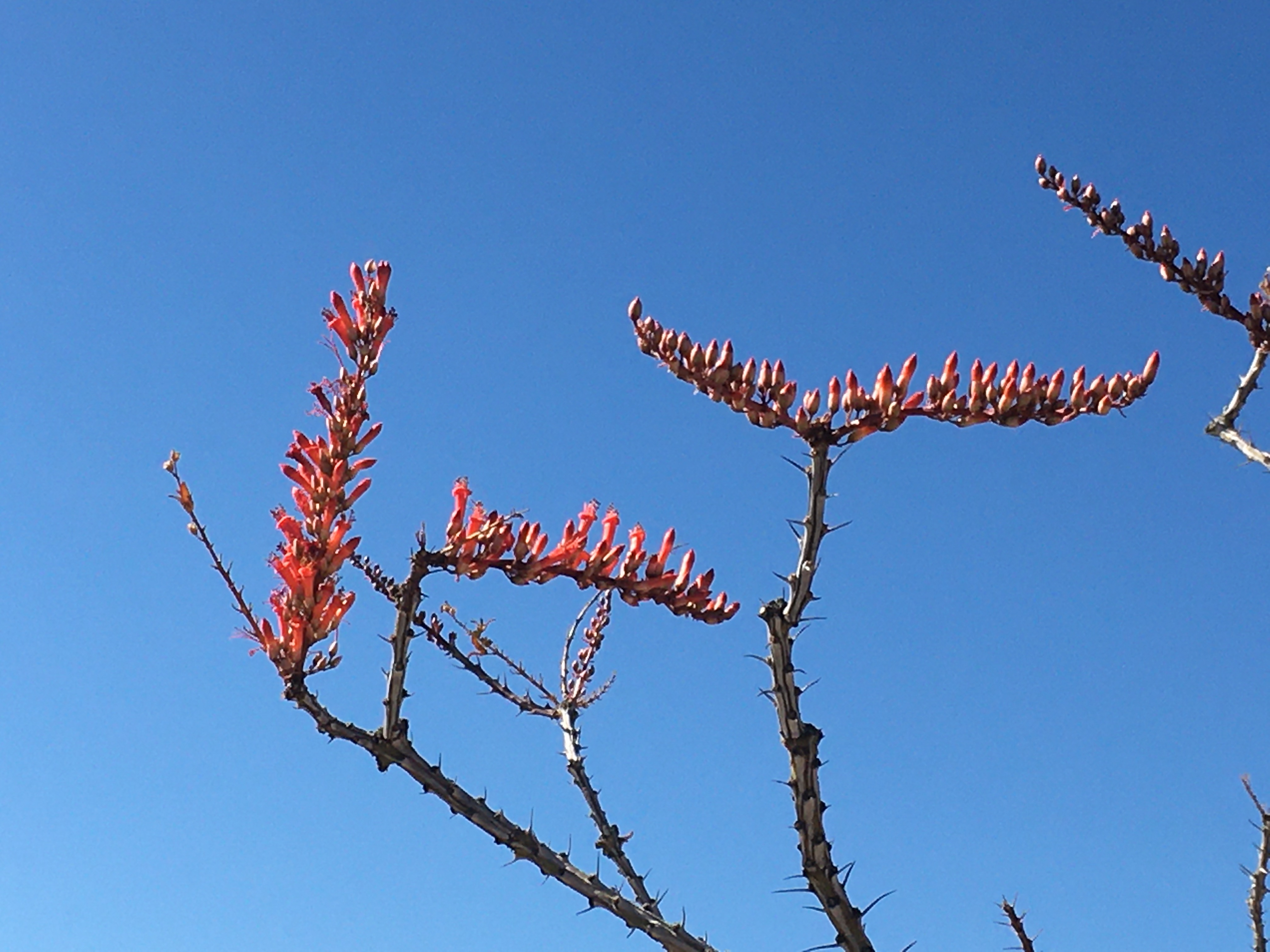
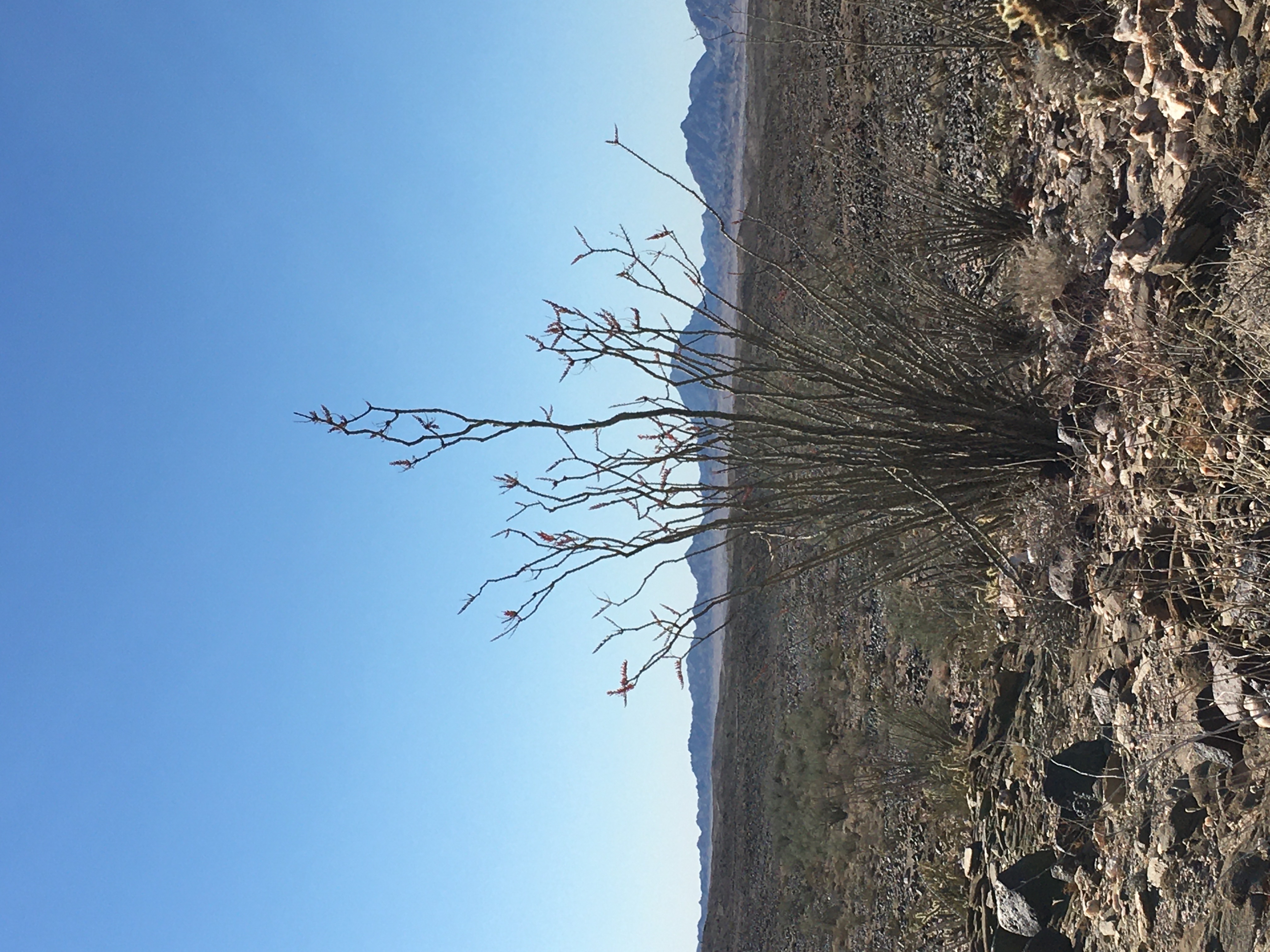
Ocotillo (Fouquieria Splendens)
They only put out leaves after rain! Other than that they photosynthesize with their spiny green stems.
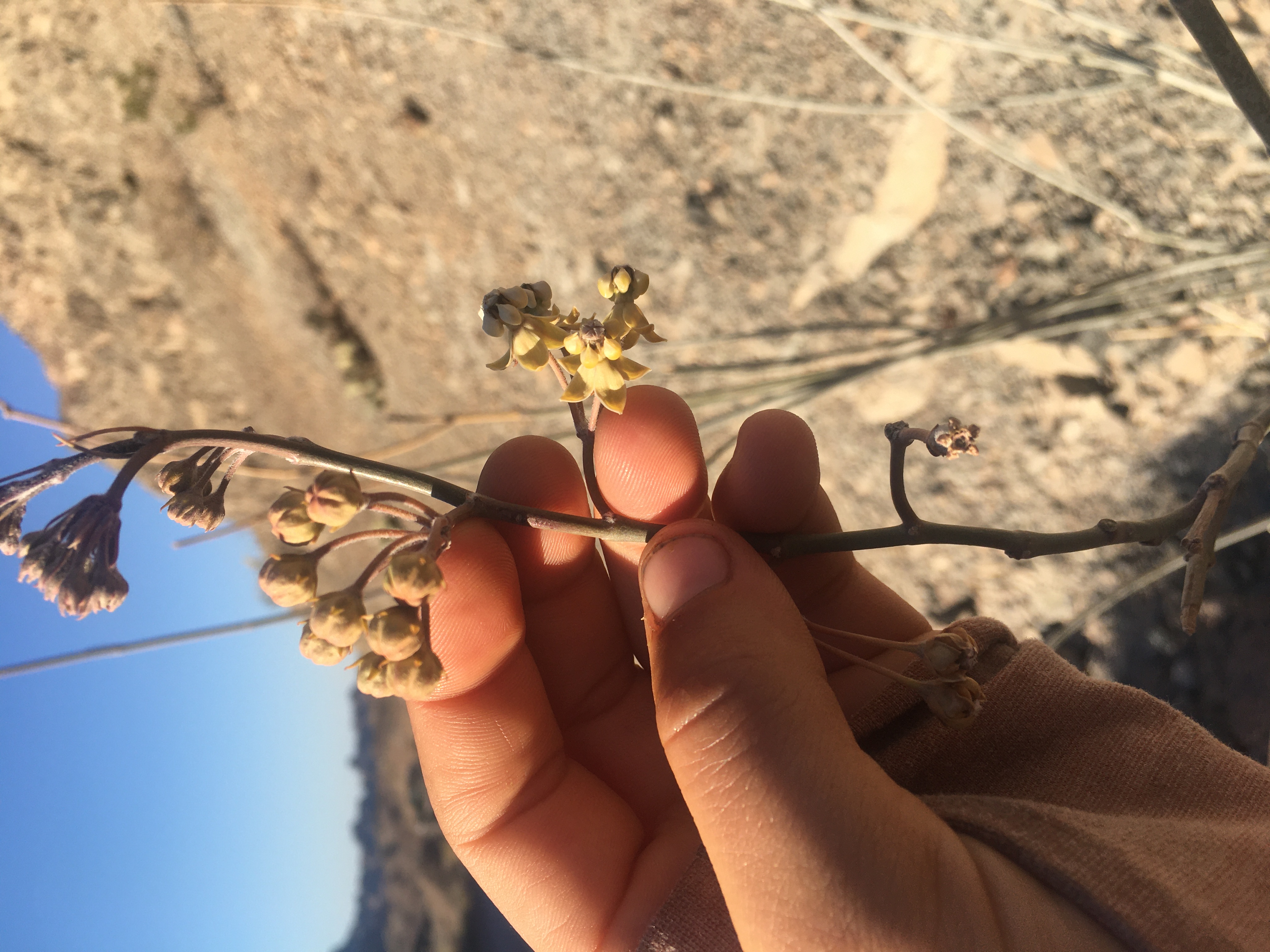
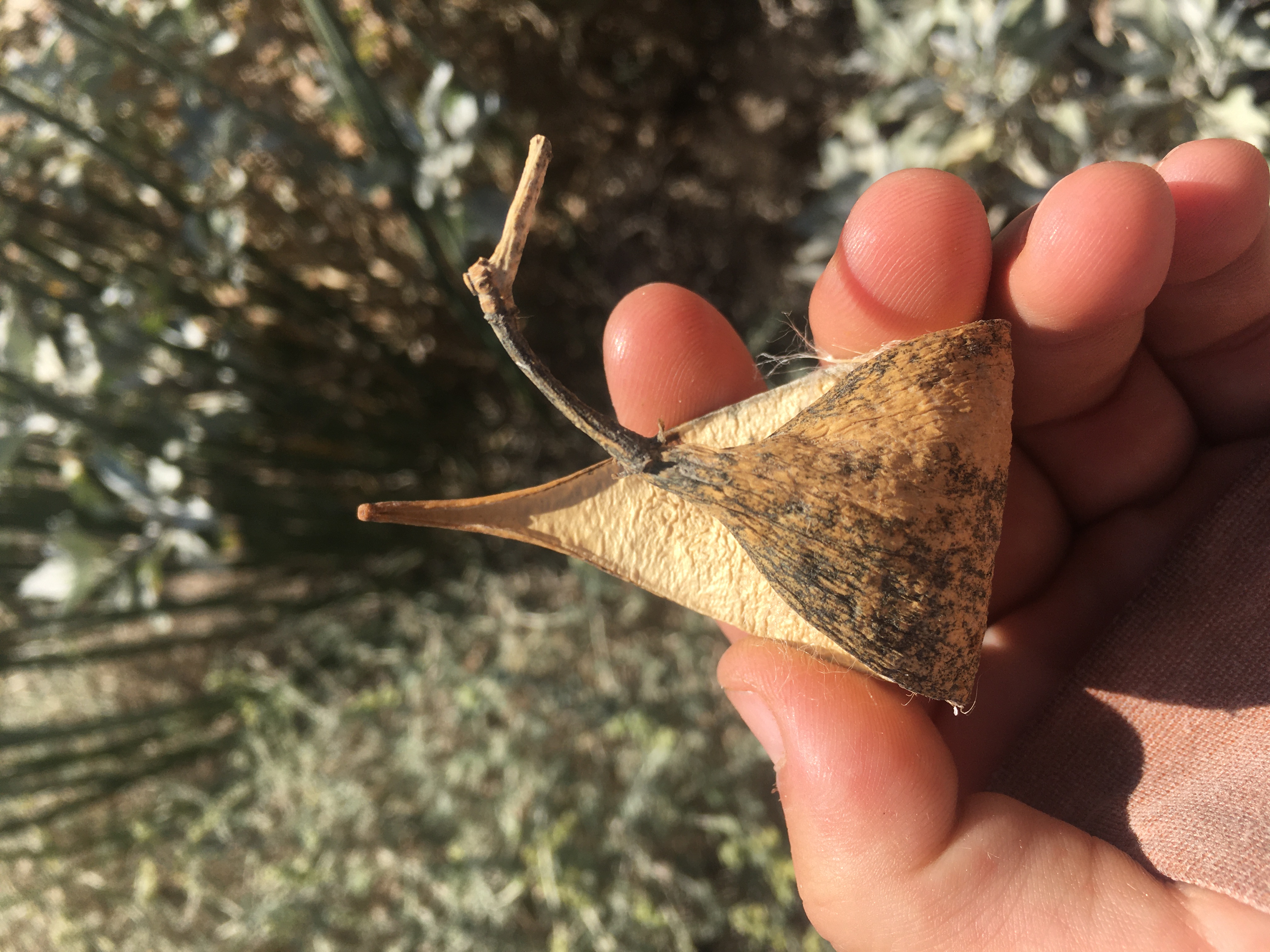
Whitestem Milkweed (Asclepias Albicans) buds, flowers, and last year’s seed pods
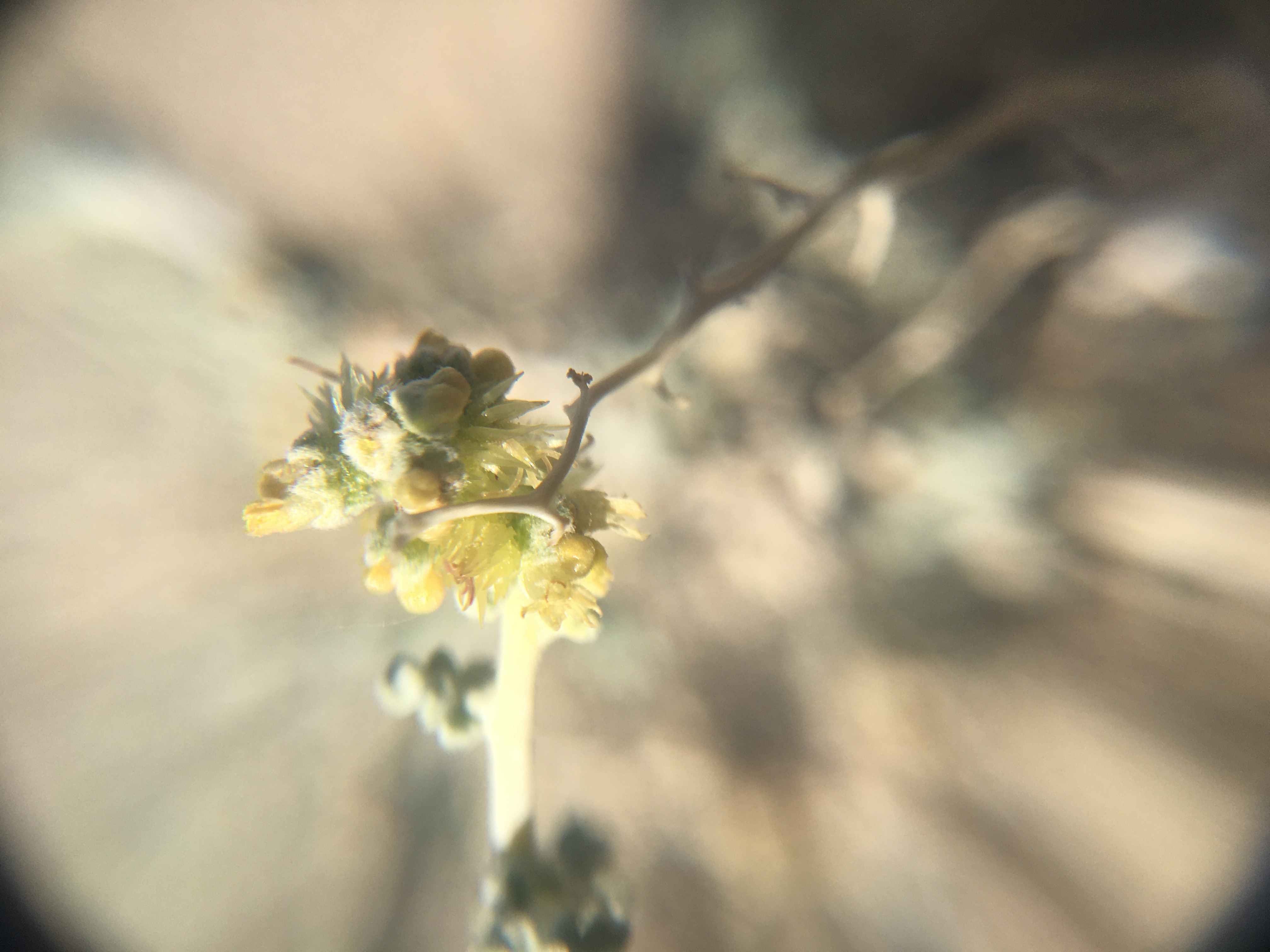
Burrobush (Ambrosia Dumosa) flowers
Burrobush, and a few other plants we are looking at, has separate staminate (pollen producing) and pistillate (containing the ovary) flowers. The spiky structures in the picture are the pistillate flowers, which will turn into burrs that we will collect later. I also really like the small, curled up leaves on this plant. You can sort of see them along the stem.
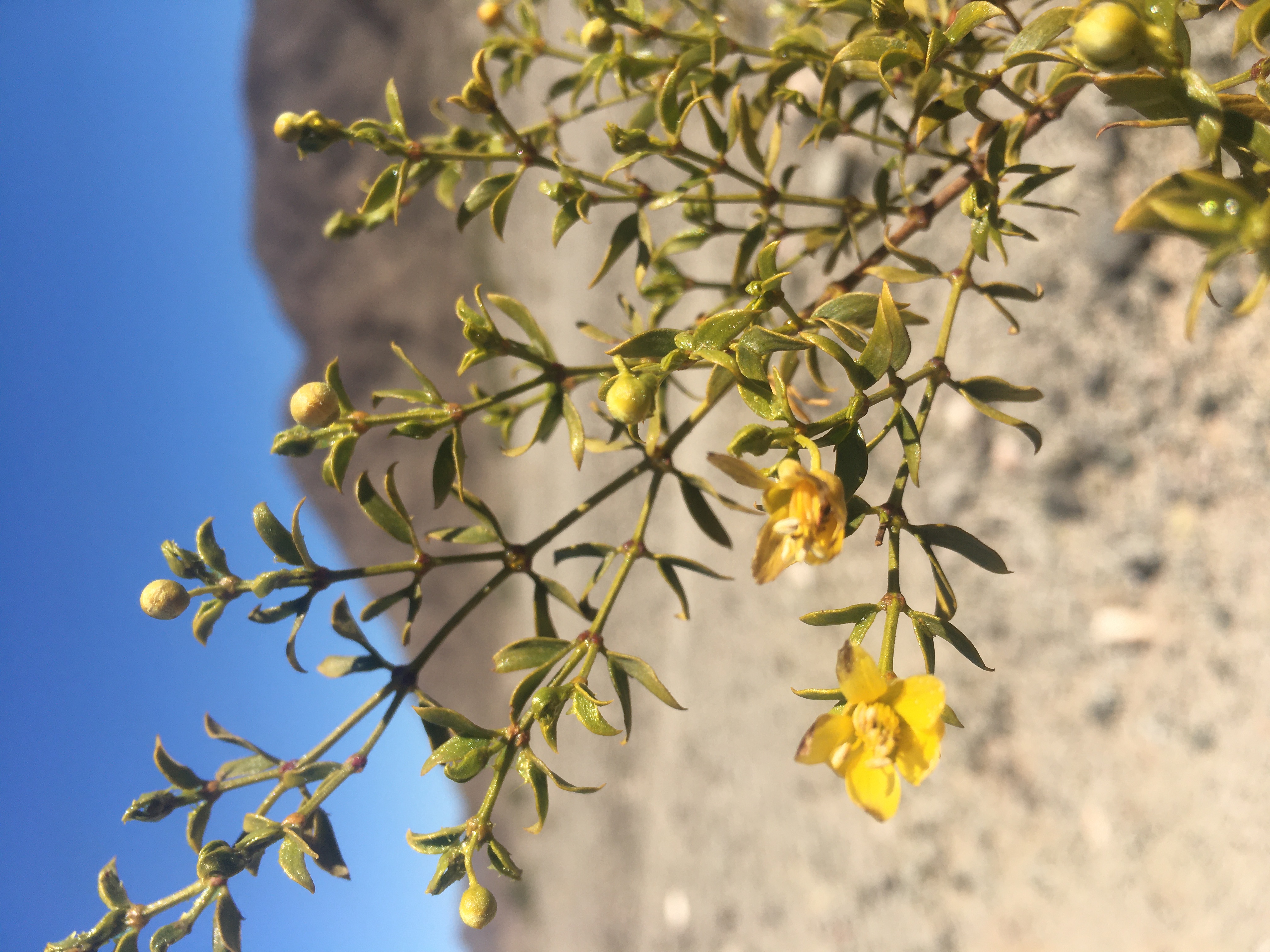
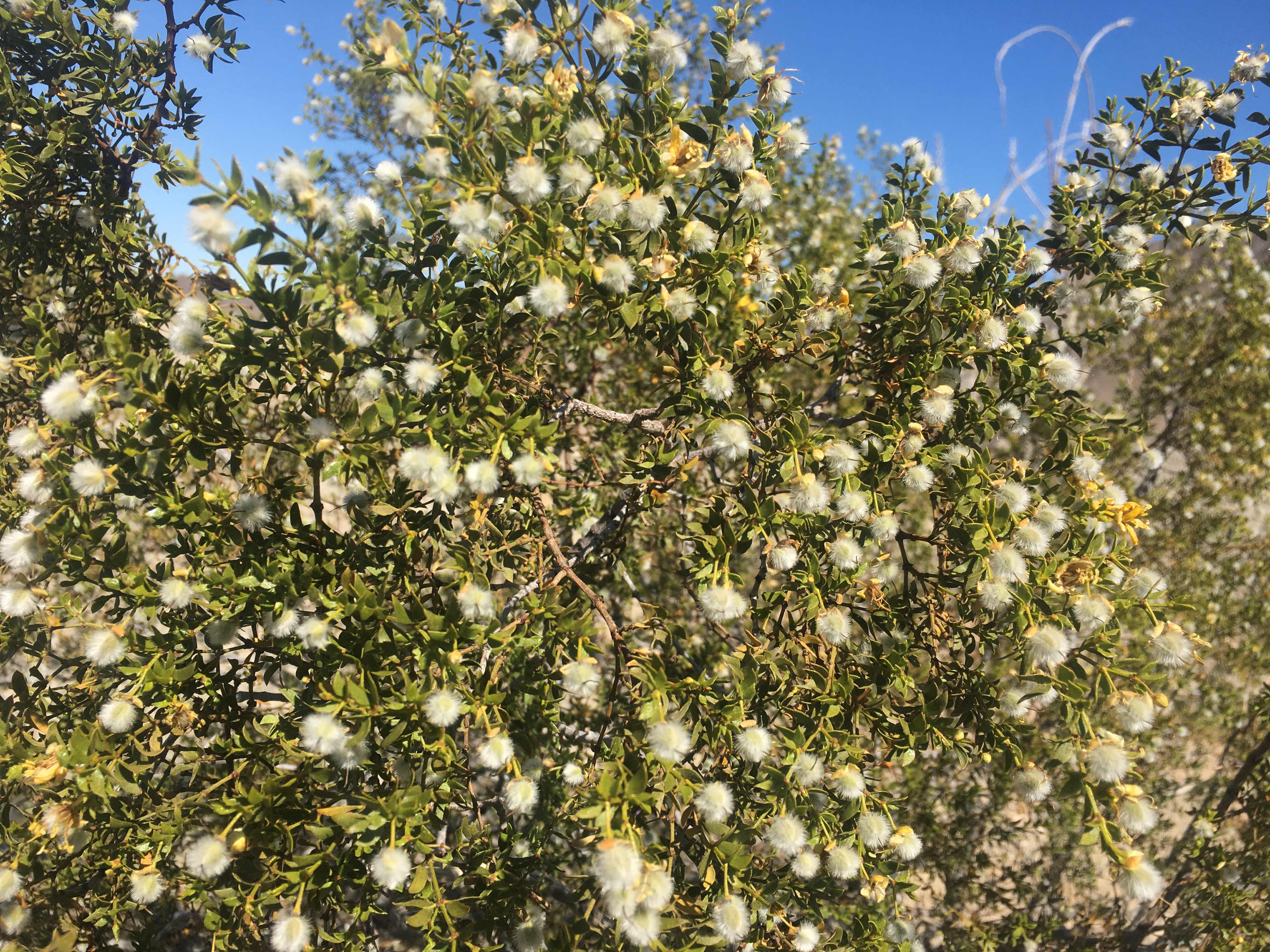
Creosote (Larrea Tridentata) flowering and gone to seed
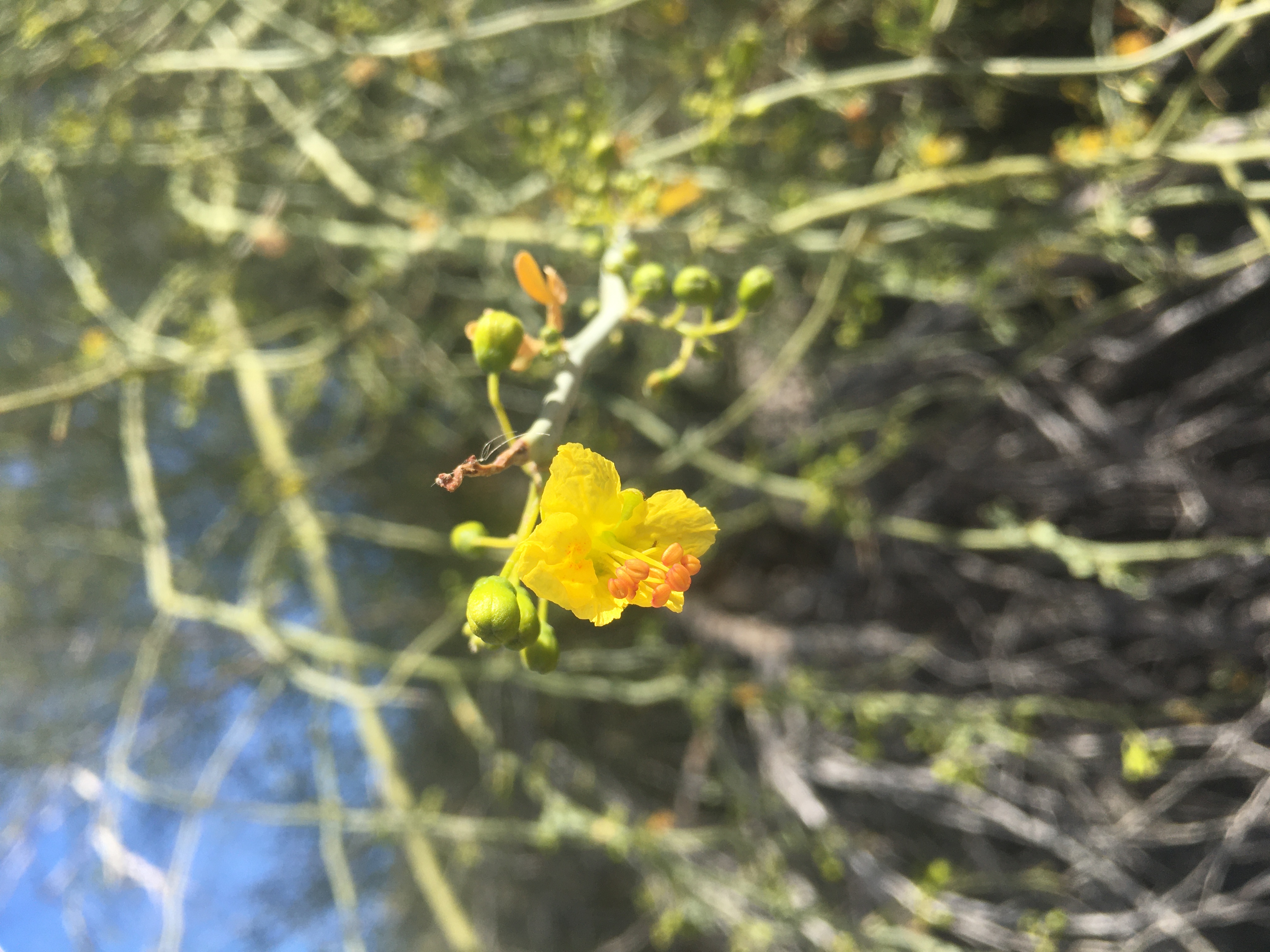
Palo Verde (Parkinsonia/Cercidium floridum) flower
Most of the Palo Verde we have seen so far has not even put out leaves yet - just big tangled green branches. This small population had leaves and a few flowers. I have loved walking through washes and counting this plant, then eating lunch in the shade of its branches. I think it is so cool that the entire tree (trunk and branches) is green/blueish.
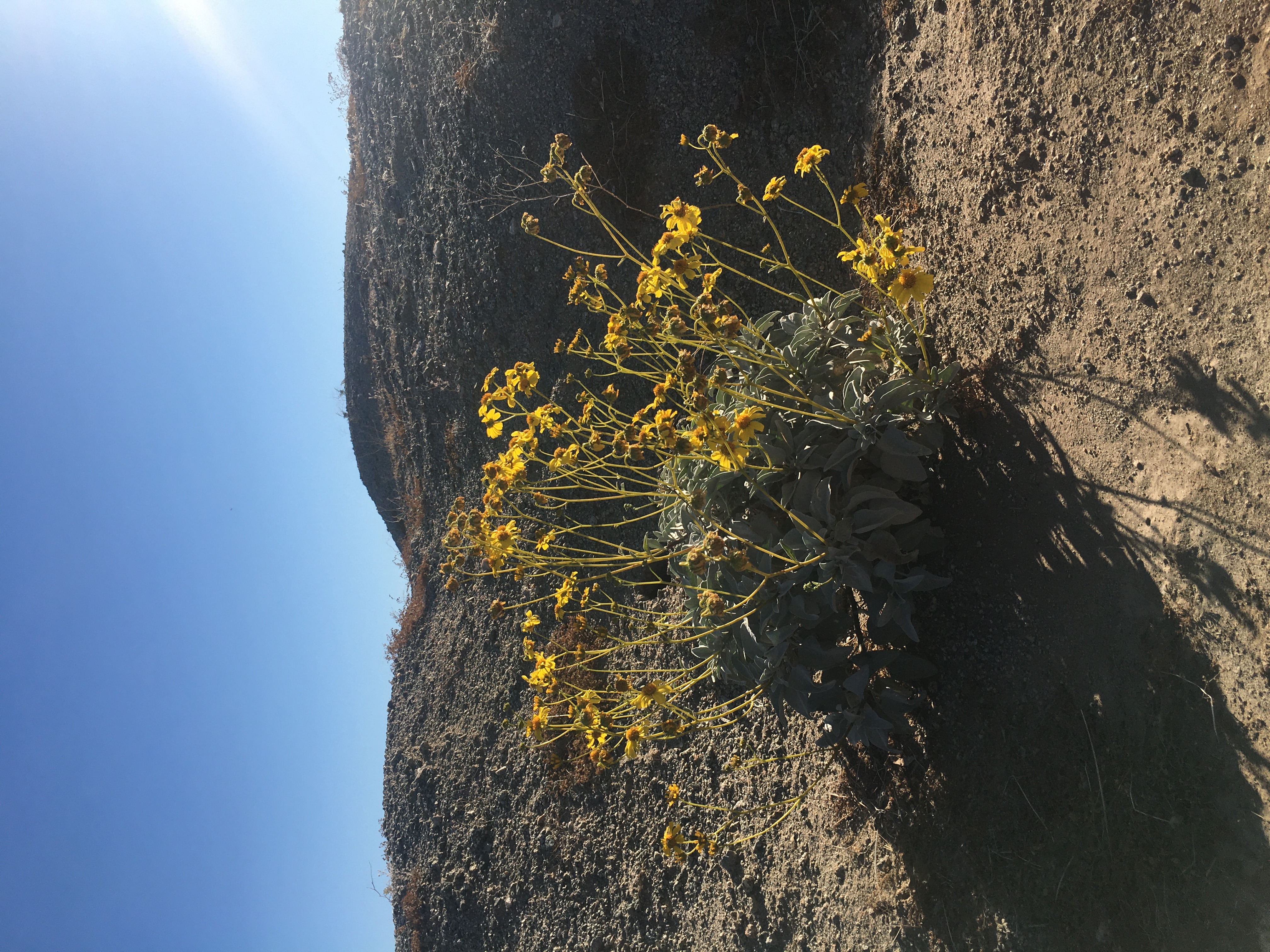
Brittlebush (Encelia Farinosa)
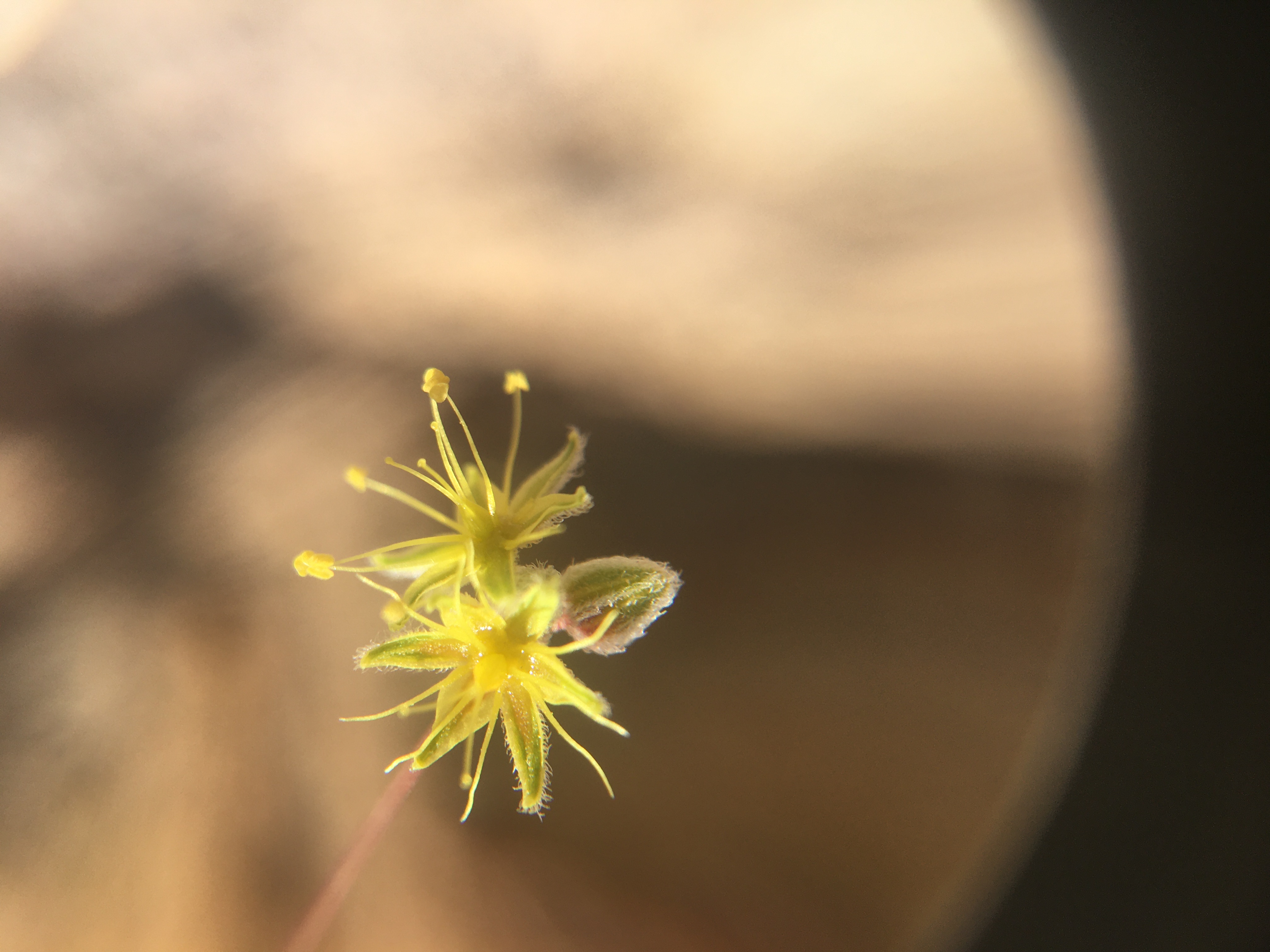
Desert Trumpet (Eriogonum Inflatum) flowers and bud
Look up a picture of the stem of this plant! (I didn’t take any good ones). It’s got so much character, and these delicate flowers. This was taken using a hand lens to magnify the tiny flowers (it works so well!).
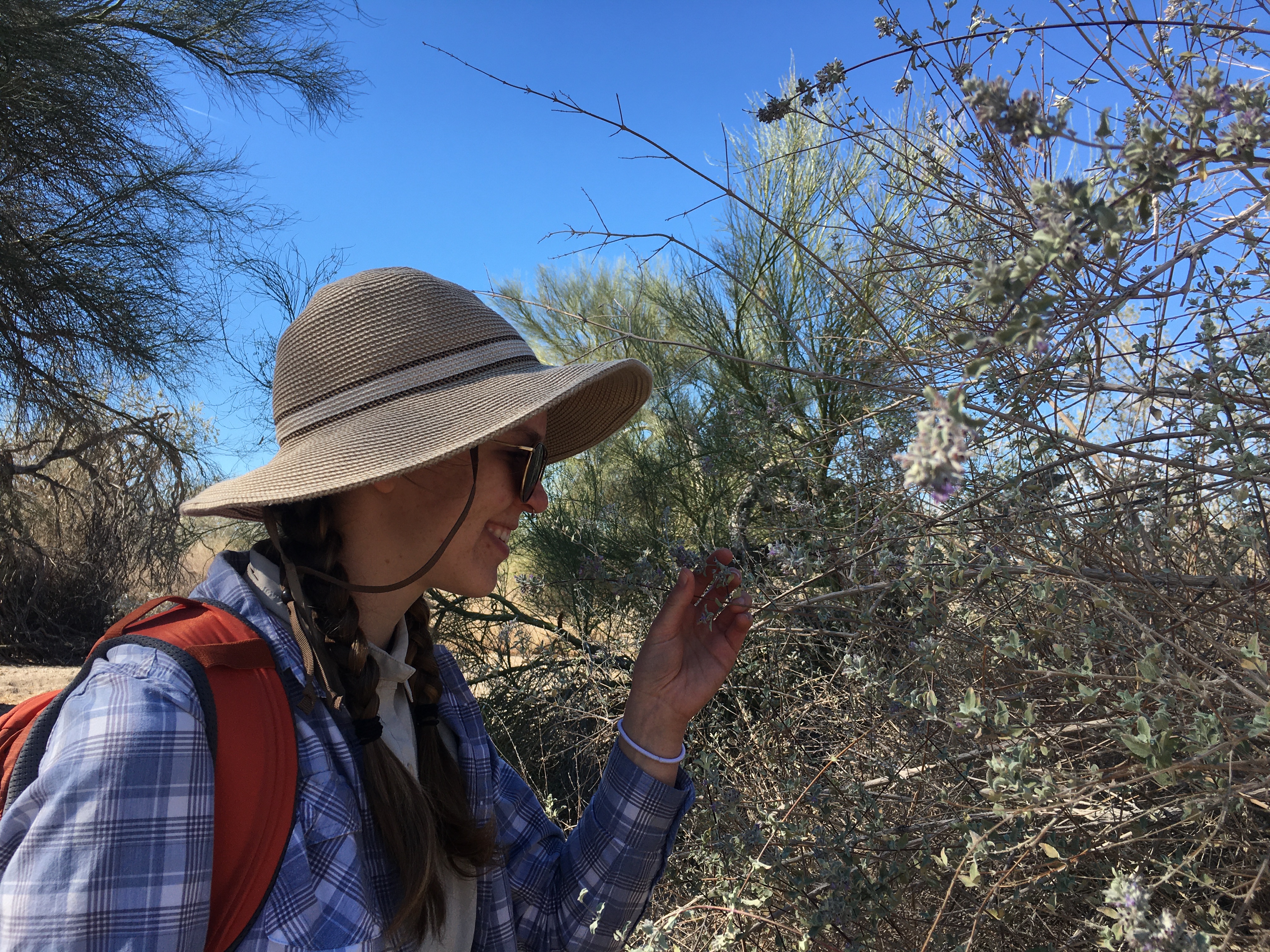
Beatrice and Desert Lavender
These bushes (not real lavender) smell amazing and are an oasis for allll the pollinators. Every time I go up to one I hear the buzzing of bees and other insects.
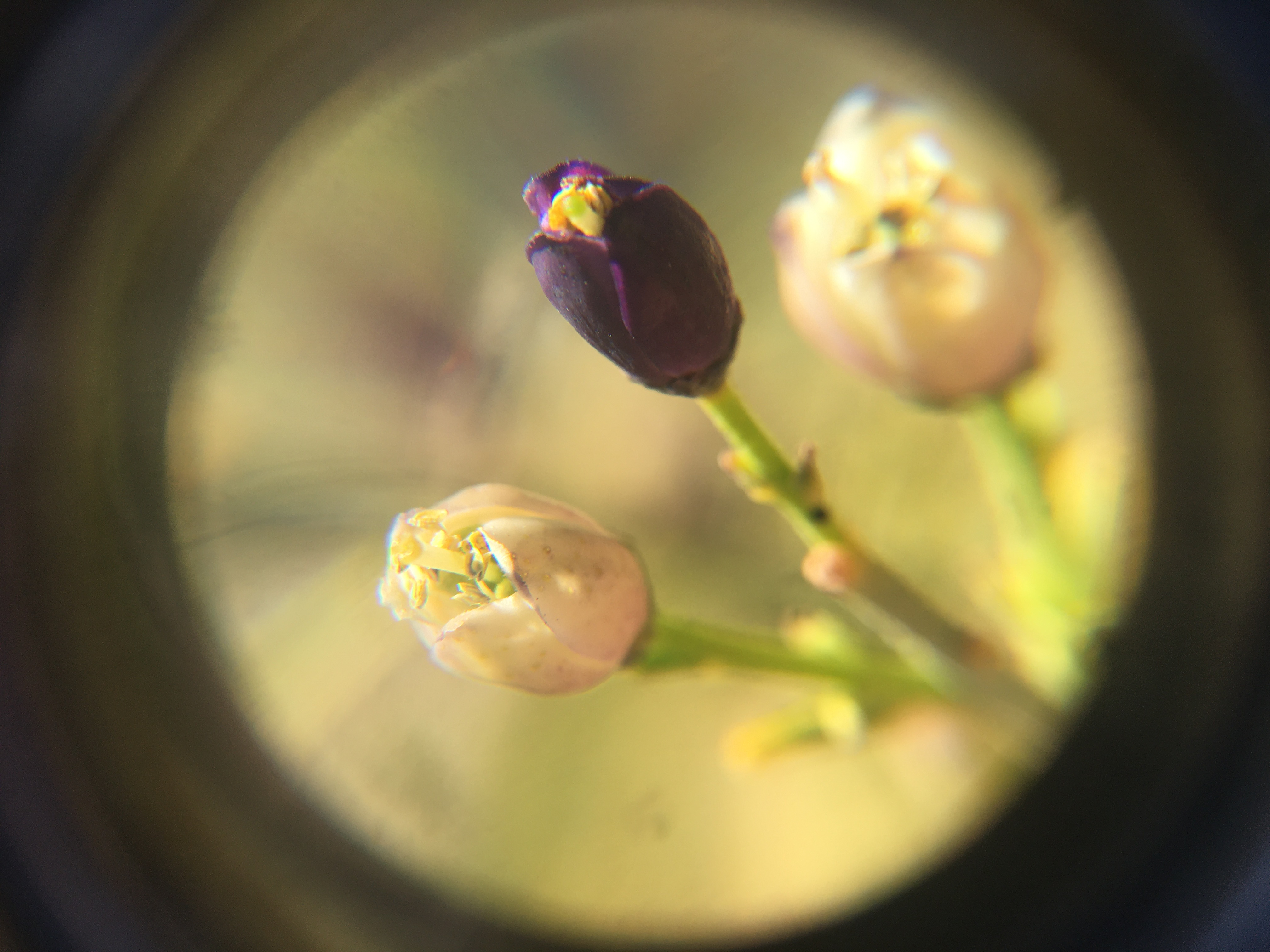
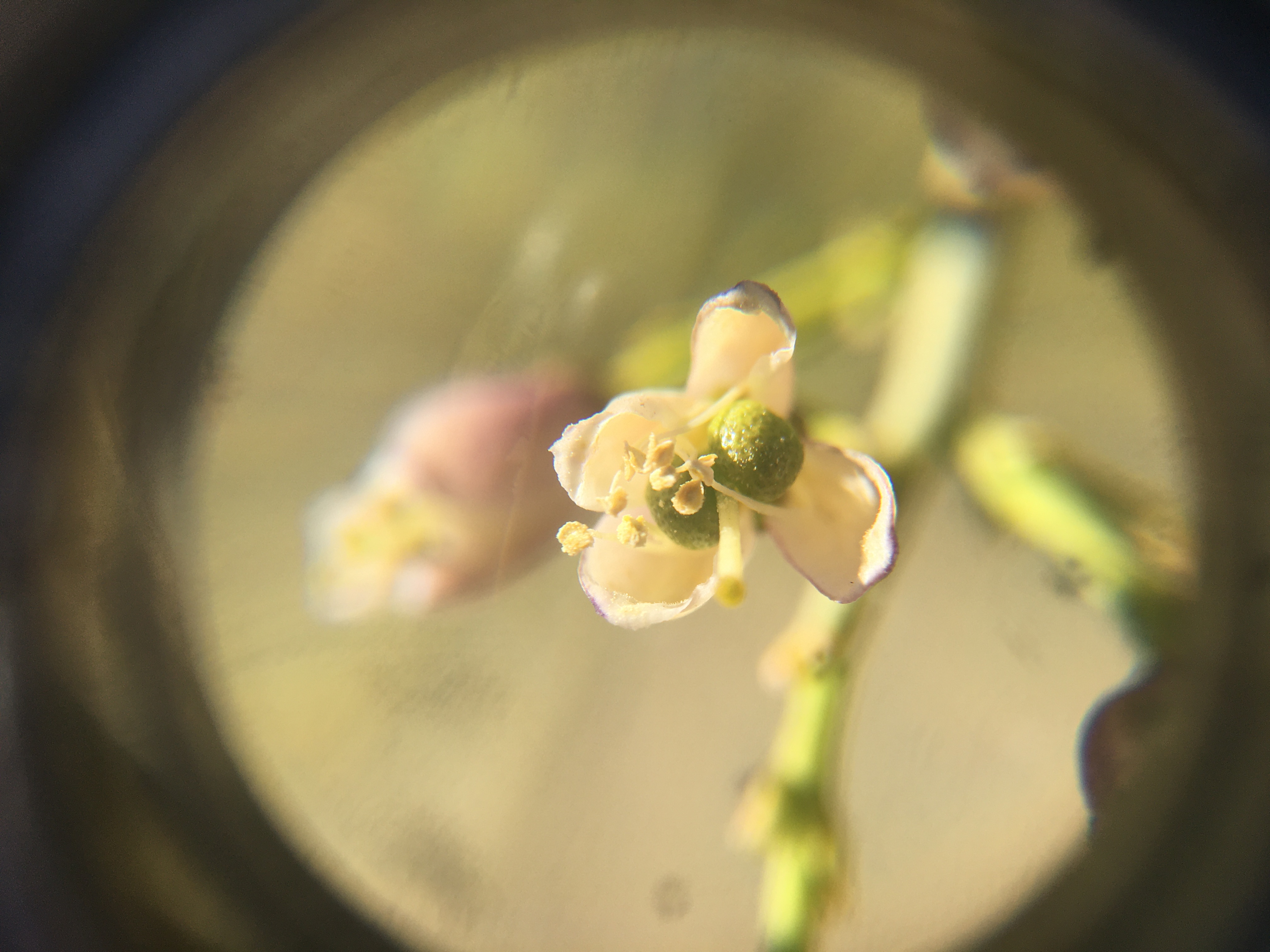
Turpentine Broom (Thamnosma Montana) flowers and flower beginning to fruit.
These pictures were also taken with the hand lens! You can see the fruit forming down there in the petals! This is one of the first flowers we saw, and I am still obsessed with it. I love that it changes so dramatically from deep purple to white. Each plant has a mix of both colors, which is just so striking.